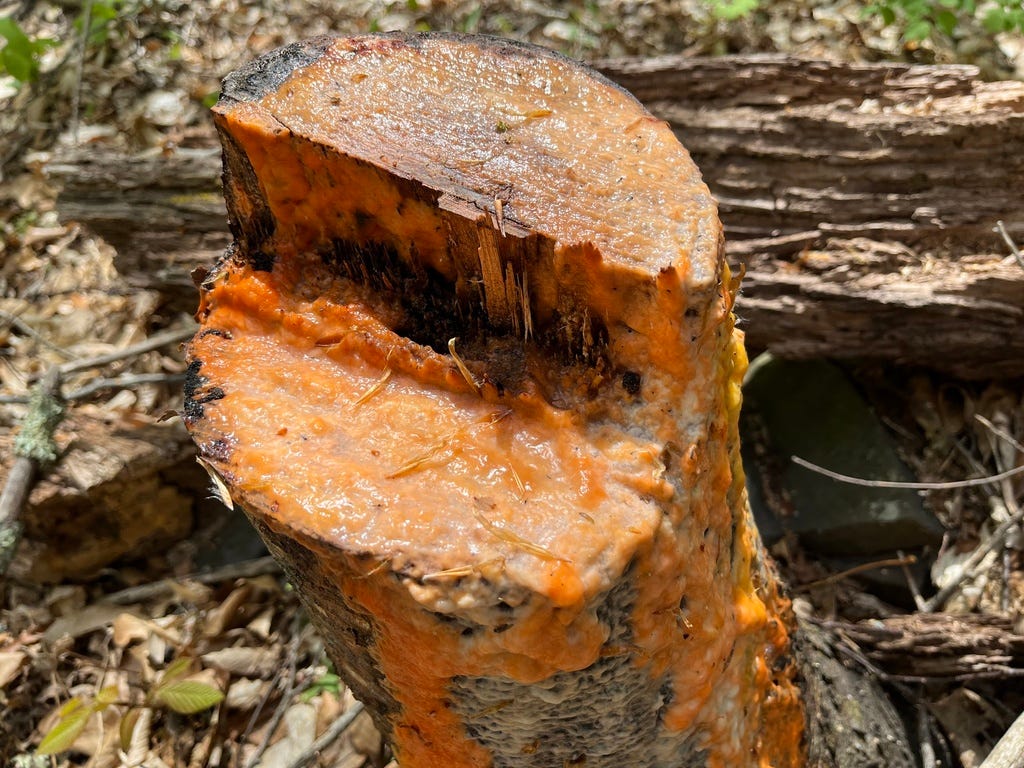Good afternoon, friends,
This week’s fungus looks like spray paint, and it’s not even just one fungus; it’s a plasmodial soup of several different fungi and microorganisms referred to by the vile (and bile) name “deer vomit” (Fusicola merismoides). I learned about this last Monday on the New York Mycological Society zoom ID session and then found it on Saturday during a chainsaw training class I took in the Catskills. Sometimes referred to as a “fungal volcano” or a “fungal potpourri”, this spring-time slime is often found on the cut limbs of trees and native grape vines (Vitis labrusca and Vitis riparia).
Fun Facts
Every specimen of F. merismoides that has been DNA barcoded has come back with a different sequence which suggests that each slime is a unique complex of different organisms. Just like a snowflake, no two are the same. The orange color comes from the fungus Fusicolla merismoides (previously Fusarium merismoides), an ascomycete that consumes some of the other yeasts and microorganisms in the flux. The slime essentially has its own ecology where some species of fungi and microbes are growing symbiotically while some are parasitizing each other - but that’s not too different from what’s going on inside our own body.
The specimens I found smelled like sour yogurt but, surprisingly (and perhaps, even, disappointingly), didn’t taste like much. At most I could pick up the root-beer like flavor from the black birch sap.

Ecology
The slime flux apparently originates from a bacterial infection in the roots of the tree. The bacteria produces methane which creates added pressure inside the tree. When the sap starts to flow up from the roots, this added pressure forces sap and bacteria out of wounds. The sugary sap is quickly colonized by other fungi, like yeasts, and F. merismoides then begins to digest the yeasts. What would be interesting to see is how frequently this occurs without human intervention, because all of the occurrences I saw in person and online were on cut stumps & limbs.

As previously noted, the slime appears in the spring when sap is running up from the roots of trees and other woody plants (like grape vines and even bamboo). It should also be noted that the slime is harmless to the tree, but that’s a bit superfluous when it grows on a cut stump. It can be found on every continent besides Antarctica and is most common in temperate climes.
Nice and short today, folks, let’s get some rain in the mix,
Aubrey
References:






